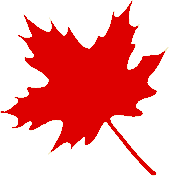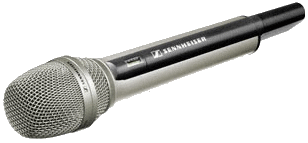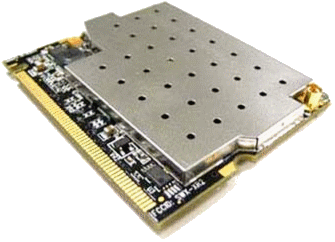Mon, 01 Jun 2015 13:00 GMT

Canada issued RSS-247 Issue 1 for DSSS/FHSS equipment on May 28, 2015. Annex 8 & 9 were taken out of the RSS-210 standard, and converted into a new RSS-247 standard. However, the RSS-210 standard continues to exist! RSS-210 for DSSS/FHSS/Digitally modulated can be used until August 28 this year, after that date, all new WiFi, BT upto V3.0 and BT V4.0, Zigbee, MSK/FSK/GFSK modulated devices must be tested to RSS-247. Equipment like momentary transmitters or equipment operating under the bare EMC limit (comparable with FCC 15.249) shall continue to be tested with RSS-210 Issue 8 with its amendment 2010. Then, less often used is Annex 11 of RSS-210 for Level Probing Radar Equipment, this was also taken out and transformed into a new standard RSS-211 Issue 1.
Mon, 21 May 2012 12:00 GMT
Europe, Host devices containing separately assessed radio modules shall bear the notified body number used for the modules on the host equipment label. If a Host is shipped without module, then the NB number shall (in principal) NOT be printed on the Host. For more information, please contact us.
Mon, 15 Aug 2011 07:00 GMT
USA, the FCC recently published the following KDB's:
KDB 997198 regarding FCC requirements for importation of radio frequency devices;
KDB 388624 regarding devices require FCC permission for a TCB to issue a grant of equipment authorization, and the procedures to obtain permission;
KDB 996369 guidance for equipment authorization of transmitter module devices, and equipment that incorporates transmitter modules.
Tue, 12 Jul 2011 10:00 GMT
Taiwan, the "Low Power Radio-Frequency devices technical standard" LP002 was updated. Section 3.10.1(5) now includes out of band test methods for FHSS and digital modulated devices; section 3.13 adds the use of 57-64GHz for indoor HDFS; section 4.3.3. adds 429.1750-429.2375MHz for metering applications; section 4.7.1(3) excludes Ad-Hoc operation in the 5.6GHz band. Follow the link (Chinese only).
Wed, 22 Jun 2011 07:00 GMT
Taiwan, as of 2012-01-01, BSMI becomes mandatory for Server equipment (TABI or RPC module II & III) and Routers, switches and hubs (DoC). The equipment has to fulfill CNS13438:2006 (EMC) and CNS14336-1:2010 (Safety).
Tue, 19 Apr 2011 10:00 GMT
USA, the FCC recently published the following KDB's:
KDB 941225 for the current SAR test procedures for 3G devices;
KDB 388624 regarding devices require FCC permission for a TCB to issue a grant of equipment authorization, and the procedures to obtain permission;
KDB 273109 for guidance on listing frequency ranges on grants for transmitters subject to Certification;
KDB 178919 on Permissive Change procedures;
KDB 848637 regarding additional Form 731 filing information, not specified in Section 8 (DFS Test Report Guidelines) in MO&O FCC 06-96 (DFS Order), required in order for a DFS device to be approved as a UNII client device without radar detection capability operating in the 5.25 - 5.35 GHz and 5.45 - 5.725 GHz bands;
KDB 996369 regarding modular transmitters;
KDB 643646 regarding SAR for PTT radios;
KDB 662911 regarding valid MIMO measurements;
KDB 579009 regarding wideband and narrowband equipment in the Part 90 re-farming bands.
Fri, 18 Feb 2011 08:00 GMT
Handy ZigBee Resource guide, including many manufacturer's equipment, modules, etc.
Mon, 14 Feb 2011 12:00 GMT
USA, the FCC recently published the following KDB's:
KDB 996369 for guidelines on modules;
KDB 594280 regarding end user setting country codes, etc;
KDB 273109 for guidance on Part 25 Transceivers;
KDB 285076 on HAC requirements for mobile handsets;
KDB 178919 guidelines for permissive changes;
KDB 388624 for devices requiring FCC permission for a TCB to issue a grant;
KDB 552295 guidelines for providing a Contention Based Protocol (CBP) operational description, as required by Part 90Z.
Tue, 23 Nov 2010 12:00 GMT

Mode 2 is the name of the specification recently approved by the DASH7 Alliance that will be submitted to ISO in order to begin the process of updating the ISO 18000-7 standard for active RFID. Mode 2 adds new PHY and MAC layers as well as new encoding and modulation schemes that enable a range of capabilities required for DASH7 to compete in the wireless sensor networking/internet of things arena. Find a summary about Dash7 mode 2 here.
Tue, 09 Nov 2010 13:00 GMT
Industry Canada announces certification requirements for host devices incorporating certified radio modules, where the combination would require SAR (RF exposure), or in case more certified radio modules are incorporated. Despite the announcement, TCB council members will get a chance to provide comments to Industry Canada that will be taken into consideration.
Fri, 05 Nov 2010 15:00 GMT

This RSS link refers to a useful article explaining wireless microphones.
At present, analog wireless microphones in the US may/could operate in:
169.445-171.905MHz for secondary use (90.265(b): 50mW B=54kHz).
54-72, 76-88, 174-216MHz (74.861: 50mW); 470-608, 614-698MHz (74.861: 250mW) .
49.82-49.9MHz (15.235); 72-73,74.6-74.8,75.2-76MHz (15.237);
88-108MHz (15.239) and 902-928, 2400-2483.5, 5725-5875MHz (Part 15.249) are an option but not very often considered.
All part 15 devices operating outside the restricted bands (15.205) and outside the TV bands can also be used when authorized according the limits and provisions of 15.209. Any part 15 device capable of transmitting in the TV bands (ch.2-51, excluding ch.37) must be marketed in compliance with all 15.216 alerts. Part 15 devices are Unlicensed and do not require an end-user use-license.
Microphones used in the 700MHz band (Part 74: 698-806MHz) are prohibited by the FCC after 2010/06/12. Devices authorized under Part 74 and 90 require a permanent (or temporarily) end-user use-license to be obtained from the FCC and must be operated at minimum distances from broadcast stations.
Digital auditive devices or microphones can operate under the provisions of 15.247 (902-928, 2400-2483.5, 5725-5850MHz; FHSS Bluetooth or digital modulated) or 15D (1920-1930MHz; DECT based).
Mon, 01 Nov 2010 08:30 GMT
What are the FCC requirements for approving a different antenna with an approved modular transmitter? Read it on our FAQ pages.
Fri, 15 Oct 2010 22:20 GMT
What is the FCC guidance for equipment authorization of modular transmitter devices, and equipment that incorporates transmitter modules? (KDB 996369)
Thu, 30 Sep 2010 10:45 GMT

Japan, Modular approval of transmitters is also feasible within the MIC certification rules. In general, the RF module must be used with a certified antenna, use stabilized input voltage, and the RF circuitry must be protected (shielded, or resin dropped) in such a way that it is not easy to access or open with normal tools. The module is regarded a module, when it is insertable or integratable only. Plugs may be pins for plugs but also pins for soldering. Modules integrated or embedded on the same PCB of the host are not considered to be a module and require separate approval. Contact Teleconformity for more information on your specific case.
Thu, 30 Sep 2010 10:30 GMT

Industry Canada provides guidance and examples on the integration of radio modules into end product (host) in RSS Gen chapter 7.1.1. (Modular) and 7.1.2 (Limited Modular).
Thu, 30 Sep 2010 10:15 GMT

Modular approval under part 15 is described in section 15.212. The FCC initially provided guidance on part 15 in document DA 00-1407 . The latest (and further clarified) guidance on the integration of radio modules into end product (host) can be found in KDB996369 issued by the FCC on July 22 (provided with this news feed).
Thu, 30 Sep 2010 10:00 GMT

Europe, ETSI Technical Reports TR102 070-1 (EMC) and TR102 070-2 (RF) provide guidance on integration of radio modules into end product (host). These guides are very useful, but unfortunately not always referred or used to its advance. In addition, the R&TTE Compliance Association provides guidance in TGN01. Find both ETSI guides here: TR102 070-1 V1.2.1 and TR102 070-2 V1.1.1 Contact Teleconformity for more information or specific cases related to the application of the guides.
Tue, 3 Aug 2010 15:00 GMT
FCC, overview of latest KDB issued:
KDB579009 (handling applications in the part 90 re-farming bands) , KDB610077 (TCB market surveillances) , KDB853844 (accreditation guidelines part 2,15 and 18) , KDB996369 (modular approval guidelines, part 15.212) , KDB641163 (TCB role and responsibility) , KDB974614 (guidelines for laboratories) .
Fri, 2 Jul 2010 13:00 GMT
Europe, current updated R&TTE Compliance Association Technical Guidance Notes: TGN01 (on modules) , TGN06 (NB Opinion validity) , TGN10 (NB Opinion content) , TGN11 (NB Opinion using non- harmonised standards) & TGN15 (technical documents)
Fri, 11 Jun 2010 11:00 GMT
Japan, MIC announcement No. 58 and 59 allows electronic display of certification numbers as of 2010/04/28. It is mainly intended for portable devices, not for computers with RF modules inside. For more information, please contact Teleconformity.